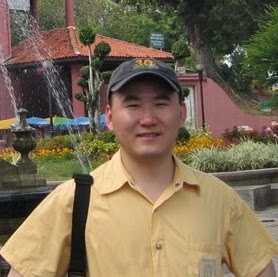Hui Chang Huang
age ~68
from North Quincy, MA
- Also known as:
-
- Hui C Huang
- Phone and address:
- 55 Elliot Ave, Quincy, MA 02171
Hui Huang Phones & Addresses
- 55 Elliot Ave, Quincy, MA 02171
- North Quincy, MA
- Weymouth, MA
Lawyers & Attorneys

Hui Hui Huang - Lawyer
view sourceLicenses:
California - Active 2001
Education:
Golden Gate University School of Law

Hui Huang - Lawyer
view sourceOffice:
Latham & Watkins LLP
Specialties:
Media Entertainment
Technology Transactions
Litigation
Intellectual Property
Technology Transactions
Litigation
Intellectual Property
ISLN:
922151355
Admitted:
2010
University:
University of California, Los Angeles, B.S., 2006
Law School:
University of Pennsylvania Law School, J.D., 2010
License Records
Hui En Huang
License #:
MA.002828 - Active
Issued Date:
Aug 14, 2014
Expiration Date:
Jun 10, 2017
Type:
Medication Administration (V)
Hui En Huang
License #:
PNT.047465 - Expired
Issued Date:
Jul 8, 2014
Expiration Date:
Sep 9, 2014
Type:
Pharmacy Intern
Hui En Huang
License #:
PST.020778 - Active
Issued Date:
Sep 9, 2014
Expiration Date:
Dec 31, 2017
Type:
Pharmacist
Hui Hua Huang
License #:
25938 - Expired
Issued Date:
Nov 7, 2007
Renew Date:
Nov 7, 2007
Expiration Date:
May 31, 2008
Type:
Certified Public Accountant
Medicine Doctors

Dr. Hui Huang, Cambridge MA - DMD (Doctor of Dental Medicine)
view sourceSpecialties:
Dentistry
Address:
1 Porter Sq Suite 11, Cambridge, MA 02140
(617)5475665 (Phone)
(617)5475665 (Phone)
Languages:
English
Chinese
Chinese

Hui L. Huang
view sourceSpecialties:
Internal Medicine
Work:
Montefiore Medical GroupMontefiore Medical Group Urgent Care
2532 Grand Concourse, Bronx, NY 10458
(718)9601500 (phone), (718)9601501 (fax)
2532 Grand Concourse, Bronx, NY 10458
(718)9601500 (phone), (718)9601501 (fax)
Education:
Medical School
Albert Einstein College of Medicine at Yeshiva University
Graduated: 1982
Albert Einstein College of Medicine at Yeshiva University
Graduated: 1982
Procedures:
Arthrocentesis
Electrocardiogram (EKG or ECG)
Pulmonary Function Tests
Vaccine Administration
Electrocardiogram (EKG or ECG)
Pulmonary Function Tests
Vaccine Administration
Conditions:
Abdominal Hernia
Abnormal Vaginal Bleeding
Allergic Rhinitis
Breast Disorders
Chronic Sinusitis
Abnormal Vaginal Bleeding
Allergic Rhinitis
Breast Disorders
Chronic Sinusitis
Languages:
English
Spanish
Spanish
Description:
Dr. Huang graduated from the Albert Einstein College of Medicine at Yeshiva University in 1982. She works in Bronx, NY and specializes in Internal Medicine. Dr. Huang is affiliated with Montefiore Medical Center.

Hui Huang
view sourceSpecialties:
Hematology/Oncology
Work:
Kaiser Permanente Medical GroupKaiser Permanente Medical Center
1 Quality Dr, Vacaville, CA 95688
(707)6244000 (phone), (707)6242051 (fax)
1 Quality Dr, Vacaville, CA 95688
(707)6244000 (phone), (707)6242051 (fax)
Procedures:
Chemotherapy
Conditions:
HIV Infection
Leukemia
Lung Cancer
Malignant Neoplasm of Female Breast
Multiple Myeloma
Leukemia
Lung Cancer
Malignant Neoplasm of Female Breast
Multiple Myeloma
Languages:
English
Description:
Dr. Huang works in Vacaville, CA and specializes in Hematology/Oncology. Dr. Huang is affiliated with Kaiser Permanente Medical Center - Roseville.

Hui Ling Huang
view sourceSpecialties:
Internal Medicine
Work:
China Town Service Center
767 N Hl St STE 200B, Los Angeles, CA 90012
(213)8081778 (phone), (213)6809427 (fax)
767 N Hl St STE 200B, Los Angeles, CA 90012
(213)8081778 (phone), (213)6809427 (fax)
Languages:
Chinese
English
Spanish
Vietnamese
English
Spanish
Vietnamese
Description:
Ms. Huang works in Los Angeles, CA and specializes in Internal Medicine.

Hui H Huang
view sourceSpecialties:
Internal Medicine
Hematology
Medical Oncology
Hematology & Oncology
Hematology
Medical Oncology
Hematology & Oncology
Education:
Shanghai Medical University (1991)
Us Patents
-
Techniques For Accessing A Shared Resource Using An Improved Synchronization Mechanism
view source -
US Patent:7644409, Jan 5, 2010
-
Filed:Jun 4, 2004
-
Appl. No.:10/861795
-
Inventors:David Dice - Foxborough MA, US
Hui Huang - Sunnyvale CA, US
Mingyao Yang - Santa Clara CA, US -
Assignee:Sun Microsystems, Inc. - Santa Clara CA
-
International Classification:G06F 9/46
G06F 12/00
G06F 9/44
G06F 9/45 -
US Classification:718104, 718100, 718101, 718108, 711100, 711130, 711147, 711155, 711163, 711154, 719312, 717106, 717159
-
Abstract:A technique for accessing a shared resource of a computerized system involves running a first portion of a first thread within the computerized system, the first portion (i) requesting a lock on the shared resource and (ii) directing the computerized system to make operations of a second thread visible in a correct order. The technique further involves making operations of the second thread visible in the correct order in response to the first portion of the first thread running within the computerized system, and running a second portion of the first thread within the computerized system to determine whether the first thread has obtained the lock on the shared resource. Such a technique alleviates the need for using a MEMBAR instruction in the second thread.
-
High-Throughput Alignment Methods For Extension And Discovery
view source -
US Patent:20030200033, Oct 23, 2003
-
Filed:Apr 12, 2002
-
Appl. No.:10/123085
-
Inventors:Jonathan Segal - Newtonville MA, US
Hui Huang - Newton MA, US -
International Classification:G06F019/00
G01N033/48
G01N033/50 -
US Classification:702/020000
-
Abstract:The invention provides an automated method of simultaneously identifying sequence information extending a plurality of seed sequences. The method consists of: (a) searching a plurality of target sequences with a multiplex query comprising a plurality of seed sequences; (b) identifying a plurality of target sequences substantially aligning with a plurality of seed sequences; (c) selecting a plurality of substantially aligned target sequences containing sequence extending information for a plurality of seed sequences, and (d) repeating steps (a) through (c) using the selected plurality of substantially aligned target sequences as a plurality of seed sequences. Also provided is an automated method of simultaneous identifying a plurality of gene sequences within a plurality of genomic region sequences. The method consists of: (a) pruning nucleic acid sequence elements from a plurality of genomic region sequences to produce a plurality of genomic seed sequences; (b) searching a plurality of target gene sequences with a multiplex query comprising a plurality of genomic seed sequences; (c) identifying a plurality of target gene sequences substantially aligning with a plurality of genomic seed sequences, and (d) locating regions of substantial alignment of the identified plurality of target gene sequences within the plurality of genomic region sequences, the regions of substantial alignment identifying a plurality of gene sequences.
-
Methods For Identifying Nucleic Acid Polymorphisms
view source -
US Patent:20030211504, Nov 13, 2003
-
Filed:Oct 9, 2002
-
Appl. No.:10/268058
-
Inventors:Kim Fechtel - Arlington MA, US
Shashi Prabhakar - Burlington MA, US
Hui Huang - Newton MA, US
Michael FitzGerald - Waltham MA, US
Joann Prescott-Roy - Concord MA, US
Michelle Runge - Bedford NH, US
Huajun Wang - Newton MA, US
Rene Gibson - Bedford MA, US -
International Classification:C12Q001/68
G06F019/00
G01N033/48
G01N033/50 -
US Classification:435/006000, 702/020000
-
Abstract:The invention provides an automated method of identifying a plurality of different polymorphisms within two or more related nucleic acid sequences. The method consists of: (a) obtaining a data set comprising a nucleic acid sequence assembly and a plurality of sequence characteristic parameters associated with said assembly; (b) indexing said nucleic acid assembly and said plurality of sequence characteristic parameters in a database; (c) selecting a region of said nucleic acid assembly having sequence characteristic parameters indicative of a polymorphic sequence, and (d) displaying two or more nucleic acid sequences of said region, said two or more sequences identifying different polymorphisms within said nucleic acid assembly. Also provided is a method of identifying a nucleic acid containing an indel region within a set of related nucleic acid sequences. The method consists of comprising: (a) dentifying a nucleic acid within two or more related nucleic acid sequences suspected of containing an indel region, said nucleic acid containing one or more regions having a plurality of polymorphisms, and (b) determining the occurrence of two or more criteria indicating the presence of an indel region associated with said one or more regions having a plurality of polymorphisms, said occurrence characterizing said nucleic acid as containing an indel region. Further provides is a method of determining the sequence of an allele containing an indel region within a set of related nucleic acid sequences. The method consists of comprising: (a) identifying a nucleic acid containing an indel region within two or more related nucleic acid sequences; (b) generating a consensus sequence within said indel region for said two or more related nucleic acid sequences; (c) identifying a matching string to said consensus sequence within at least one of said two or more related nucleic acid sequences, and (d) subtracting said consensus sequence from said two or more related nucleic acid sequences, the presence or absence of a unique sequence in one of said related nucleic acid sequences indicating the presence of an actual indel region. The invention additionally provides an automated system for identifying a plurality of different polymorphisms within two or more related nucleic acid sequences. The system consists of: (a) a sample submission module capable of transmitting data; (b) a core statistics loading and post processing module containing sequence characteristic parameters; (c) an assembly module capable constructing sequence assemblies from sequence database extracted data; (d) a SNP prospector module capable of identifying polymorphisms; (e) a polymorphism loader submodule capable of parsing polymorphic region sequence and sequence characteristic parameters from sequence assemblies; (f) a SNP database structured to contain the information produced in steps (a) through (e), and (g) an output module for display or further manipulation of specified data in step (f).
-
Diagnosing Human Diseases By Detecting Dna Methylation Changes
view source -
US Patent:20070292866, Dec 20, 2007
-
Filed:Dec 6, 2006
-
Appl. No.:11/634755
-
Inventors:Huajan Wang - Newton MA, US
Anthony Anisowicz - West Newton MA, US
Richard Del Mastro - Norfolk MA, US
Hui Huang - Lexington MA, US
Sergey Mamaev - West Roxbury MA, US -
International Classification:C12Q 1/68
-
US Classification:435006000
-
Abstract:This invention relates to methodologies that detect global changes in the methylation of human genomic DNA as well as changes in methylation in specific regions of the human genome. The methodologies have utility in the diagnosis, prognosis and monitoring of therapeutic treatment for any human disease. Further, the invention relates to methodologies that can detect global changes in the methylation of human genomic DNA that is a consequence of diet and/or dietary supplements. The invention also relates to identifying novel DNA methylation biomarkers that are associated with human disease.
Isbn (Books And Publications)

Das Rechtssystem Des Bankuberweisungsverkehrs in Der Vr China
view sourceAuthor
Hui Huang
ISBN #
3899492641

International Securities Markets: Insider Trading Law in China
view sourceAuthor
Hui Huang
ISBN #
9041125574
Name / Title
Company / Classification
Phones & Addresses
Vanfo United Enterprises
Recycling Services
Recycling Services
2428 W 13 Ave, Vancouver, BC V6K 2S8
(604)7168618
(604)7168618
President
E N E BROTHER HUANG, INC
Dba Chinatown Cafe 672 Main St, Reading, MA 01867
672 Main St, Reading, MA 01867
672 Main St, Reading, MA 01867
Director, Vice President
Sinocoking Coal and Coke Chemical Industries, Inc
Hui Huang DMD
Dentists
Dentists
36 Chauncy St, Boston, MA 02111
(617)3385000
(617)3385000
Vanfo United Enterprises
Recycling Services
Recycling Services
(604)7168618
HONGLI CLEAN ENERGY TECHNOLOGIES CORP
Applicant
Huang Corporation
Youtube
Flickr

Peng Hui Huang
view source
Hui Zhen Huang
view source
Hui Juan Huang
view source
Hui Juan Huang
view source
Hui Ling Huang
view source
Hui Hua Huang
view source
Kee Hui Huang
view source
Hsiu Hui Huang
view sourceGoogleplus

Hui Huang
Work:
IPV Capital - Investment Manager (2008)
Education:
Shanghai Jiao Tong University

Hui Huang

Hui Huang
Education:
Xiamen University - International Journalism

Hui Huang
Education:
CIT

Hui Huang

Hui Huang

Hui Huang

Hui Huang
Classmates

Heald Business College, O...
view sourceGraduates:
Guo Hui Huang (1996-1997),
Gloria Wayenberg (1967-1969),
Sandra Fritschle (1993-1994),
Fernando Cubangbang (1990-1991),
Tamahtra Mcclure (1992-1994)
Gloria Wayenberg (1967-1969),
Sandra Fritschle (1993-1994),
Fernando Cubangbang (1990-1991),
Tamahtra Mcclure (1992-1994)
Get Report for Hui Chang Huang from North Quincy, MA, age ~68













